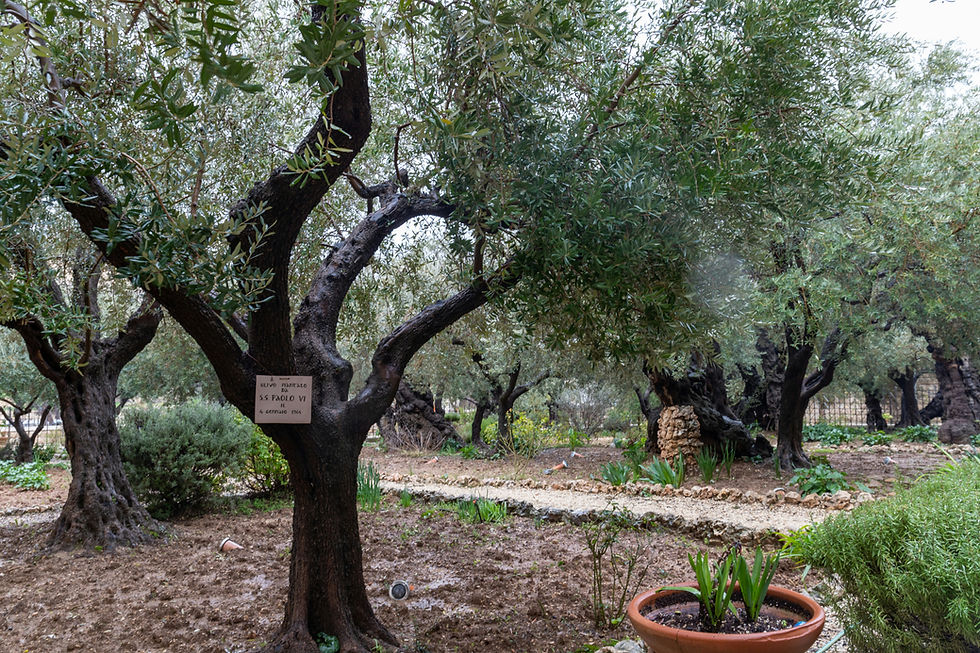Building Up the Church Through Prayer
- JCGR

- 10 hours ago
- 3 min read

When Jesus lifted His eyes to heaven in John 17, we are given a rare and holy glimpse into the very heart of the Son communing with the Father. This prayer—often called the “High Priestly Prayer”—shows us not only the intimacy within the Trinity but also the foundation of the Church’s life. At the core, the objective is God’s glory.
The Centrality of Prayer
Jesus begins by acknowledging the hour had come. His entire life had been lived in perfect obedience, and now the cross stood before Him. Even in this moment, He prayed. The Son, though equal with the Father, presented Himself in humility as a servant, submitting to the Father’s will. In His prayer, the Trinity is glorified, each Person working in perfect unity toward redemption.
John Owen once wrote, “He who prays as he ought will endeavor to live as he prays.” Here, Jesus shows us that prayer is not peripheral but central. Prayer is the very lifeline of obedience and surrender, the posture that glorifies the Father in all things.
The Saving Power of the Trinity
Jesus declared that the Father had given Him authority over all flesh, so that He might give eternal life to those entrusted to Him. Eternal life is not something that begins after death—it begins now, in knowing the only true God and Jesus Christ whom He has sent.
The wonder of salvation is this: the Father gives a people to the Son, the Son secures their redemption, and the Spirit applies this salvation to their hearts. As Matthew Henry wrote, “Everlasting life is a jewel of too great a value to be purchased by the wealth of this world.” It is wholly God’s gift, received by grace through faith.
The Reality of Christ’s Work on Earth
Jesus prayed, “I glorified You on the earth, having finished the work which You have given Me to do.” His entire earthly life was a living testimony to the Father’s glory. From His incarnation to His perfect obedience, from His miracles to His teaching, all of it was part of the redemptive work.
C.S. Lewis observed, “The central miracle asserted by Christians is the incarnation. They say that God became man.” James Montgomery Boice added, “The incarnation made it possible for Jesus Christ to die.” The cross was not an accident of history but the culmination of the divine plan—a plan that included every moment of Christ’s earthly ministry.
The Final Act of Redemption
Finally, Jesus prayed for the glory He had with the Father before the world began. This was not a request to gain something new but to return to what He had willingly set aside for the sake of our salvation. The cross was imminent, but so was the crown. In His glorification, both judgment and mercy would be displayed—the holiness of God in condemning sin and the love of God in forgiving sinners who trust in Christ.
As J.I. Packer reminded us, “God’s overriding goal is to glorify himself.” In the cross and resurrection, God’s glory shines brighter than anywhere else, as justice and mercy meet in perfect harmony.
Where Do We Go From Here?
John 17 is not just history—it is the heartbeat of the Church’s life today.
Jesus’ prayer should guide our prayers. We must learn to pray with our eyes fixed on God’s glory.
The Trinity is at work in us. The Father has chosen us, the Son has redeemed us, and the Spirit indwells us.
We can take courage because the work is finished. As Charles Spurgeon said, “Jesus has made the life of His people as eternal as His own.”
The Church is built up through prayer, sustained by grace, and anchored in the finished work of Christ. And so we, too, lift our eyes to heaven, confident that the One who prayed for us then still intercedes for us now.




Comments